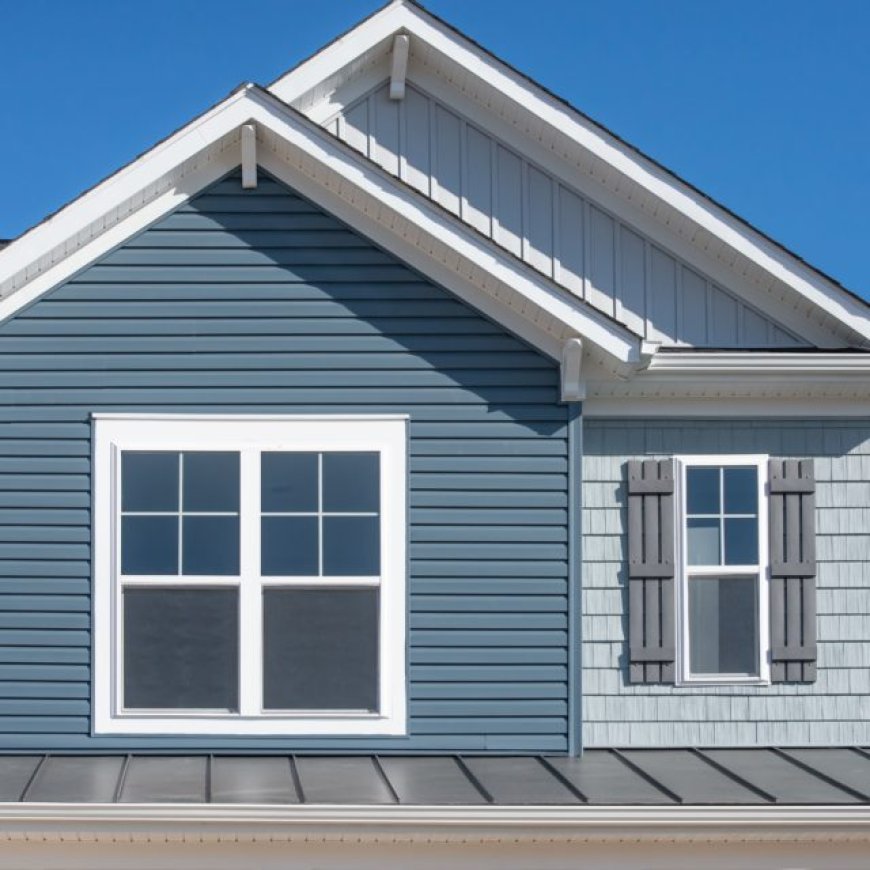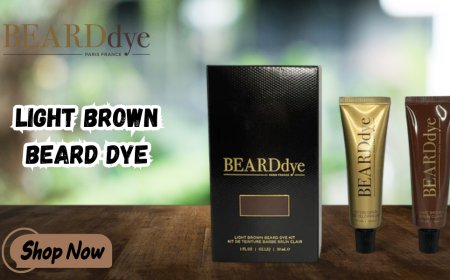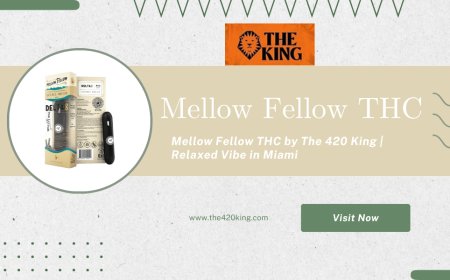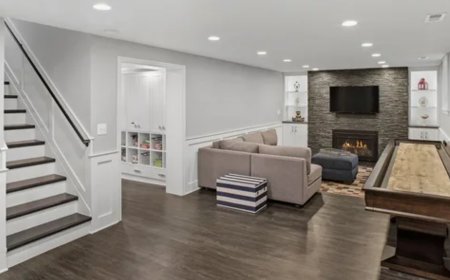Thinking About Vinyl Siding? Here’s What You Need to Know Before You Decide

If your homes exterior is starting to look tired or dated,vinyl sidingmight be the upgrade you didnt know you needed.
Its affordable, durable, and easy to maintain but is it the right fit for your home?
Whether you're remodeling or building from scratch, this article cuts through the noise and gives youreal, honest insightinto whatvinyl sidingis all about without the sales pitch.
What Makes Vinyl Siding So Popular in 2025?
Lets start with why so many homeowners are choosingvinyl sidingin 2025.
It's not just about looks. Todays vinyl siding ismore advanced, eco-friendly, and longer-lastingthan the older versions you might be picturing. Think less plastic-looking panels, and more textured, realistic finishes that can mimic everything from cedar shakes to board-and-batten farmhouse styles.
Plus:
-
Itsbudget-friendly perfect for families and first-time buyers.
-
It holds up well indiverse climates, from rainy coasts to dry heat.
-
It requiresalmost no upkeep, saving time and money year after year.
Vinyl Siding in Plain English: What Is It, Exactly?
Vinyl siding is a type ofplastic exterior claddingmade from PVC (polyvinyl chloride). That might sound technical, but what it means for you is this:
-
It wont rot, rust, or attract insects.
-
Its designed to handledecades of sun, rain, and snow.
-
Its available indozens of colors and textures, so you dont have to settle for plain white.
Think of it as a long-term jacket for your house one that never goes out of style.
The Real Pros and Cons (No Sugarcoating)
Lets be honest no siding is perfect. But knowing the trade-offs helps you make a smart decision.
? The Upsides:
-
Low maintenance:A yearly rinse is all it needs.
-
Cost-effective:Often4060% cheaperthan fiber cement or wood.
-
Long lifespan:Typically lasts2540 years, with minimal fading.
-
Energy-efficient options:Insulated vinyl siding can help reduce energy bills.
? The Downsides:
-
May crack in extreme cold(common below -10F).
-
Not ideal near high heat sourceslike grills or fire pits.
-
Limited recyclability not the greenest material, unless you choose brands with recycled content.
How to Tell If Vinyl Siding Is Right forYourHome
Heres how to think about it:
|
If you value |
Then vinyl siding is |
|
Low cost upfront |
A top contender |
|
No-hassle maintenance |
Perfect |
|
DIY-friendly projects |
A strong option |
|
Rustic or wood-heavy aesthetics |
A maybe (try cedar-look vinyl) |
|
Fire resistance |
Not ideal look into fiber cement |
Still unsure? Think about your homes location and style. For example,vinyl works beautifully in suburban homes, ranch-style houses, and even modern designs with the right paneling. But if you live in a wildfire-prone area, you may want to consider other materials.
Quick Breakdown: Different Vinyl Siding Styles
Choosing vinyl isnt just yes or no. You have style options, and thats where things get fun.
? Traditional Lap Siding
The most common look clean, horizontal lines. Simple and timeless.
? Vertical (Board & Batten)
Great for farmhouse and modern styles. Adds height and a bold visual.
? Shake & Shingle
Perfect for accents, dormers, or cottage-style homes. Mimics real wood texture.
? Insulated Vinyl Siding
Comes with a foam backing. It costs a bit more but adds energy savings and noise reduction.
What About Color and Curb Appeal?
Gone are the days when vinyl siding only came in beige or white.
In 2025, top manufacturers offerover 100 color options, including deep charcoals, navy blues, forest greens, and even rustic reds. Some options also haveUV-resistant coatingsthat keep colors bold for 20+ years.
Tip: Go with neutral tones if you're planning to sell soon. They boost resale value and appeal to more buyers.
Can You Install Vinyl Siding Yourself?
If youre handy, vinyl siding is one of the few exterior upgrades youcan tackle yourself with the right tools and patience.
But heres the catch:bad installation equals problems.
Common mistakes like nailing it too tight, skipping flashing, or ignoring expansion gaps can cause buckling or water damage later. If you're not confident, it's worth hiring alicensed siding contractor.
Average pro installation cost (2025):
$6,500$12,000for a standard 1,500 sq. ft. home, depending on materials and region.
Keeping Vinyl Siding Looking Like New
Maintenance is simple, but not optional. Here's how to keep it sharp:
-
Wash annuallyusing a soft brush and mild detergent. Power washers can work just dont spray into the seams.
-
Check for loose panelsafter storms or strong winds.
Keep grill heat away(minimum 2-3 feet from walls).
-
Trim shrubs and trees they can scratch or trap moisture
Final Thoughts: Should You Go for It?
Vinyl siding makes a lot of sense especially if youre looking for:
-
A clean, polished look
-
Lower maintenance and long-term value
-
A smart upgrade without breaking the bank
It might not be perfect for everyone, but its astrong choice for most homeownerslooking for a reliable, attractive exterior that wont demand weekend after weekend of upkeep.
Just make sure youchoose a reputable brand, ask about warranties, and get it installed properly.
Ready to Explore Your Options?
If youre leaning toward vinyl siding, take the next step:
-
Visit a local showroom to see colors and textures in person.
-
Ask forsamplesand compare them on your home.
-
Get23 quotesfrom certified installers in your area.
A beautiful, low-maintenance home exterior might be closer than you think.








































